Gazali, seven months pregnant, with her two youngest children scampering by her side, shouldn’t be here. With her spine half broken due to the weight her back must bear, Gazali should not bend over to work the ground without proper tools.
But she is here, she and a dozen others like her. They have no choice. “What could I do? I need the money. Now that the growing season has started, I can’t stop,” says Gazali, who earns 40 Turkish liras ($5) on the days she works. Her husband, Eyad, also works with her. They both earn the same amount.
“Before the war, my life was very different. I was a nurse, and we were doing very well. But six years ago, we decided to leave — we couldn’t take it anymore. Since then, we’ve lived in those lands right next to here, in tents,” explains Gazali, a Syrian refugee who currently lives in the Turkish city of Reyhanli, on the other side of the Syrian border.
A few hundred meters away from the field where Gazali, Eyad, and other Syrians grow garlic, followed by tomatoes in the spring, stands the wall that separates them from their previous life, which 10 years ago, on March 15, changed forever.
Those days that will never come back are deeply missed. “If we had something better on the other side, we’d be back right now,” Eyad says, “and if the bombing stops, and it is safe to return, of course. And also, if Bashar leaves.” What if Syrian President Bashar al-Assad stays? “Then we stay here,” the man continues. The others laugh: “If he doesn’t leave, then we don’t go back.”
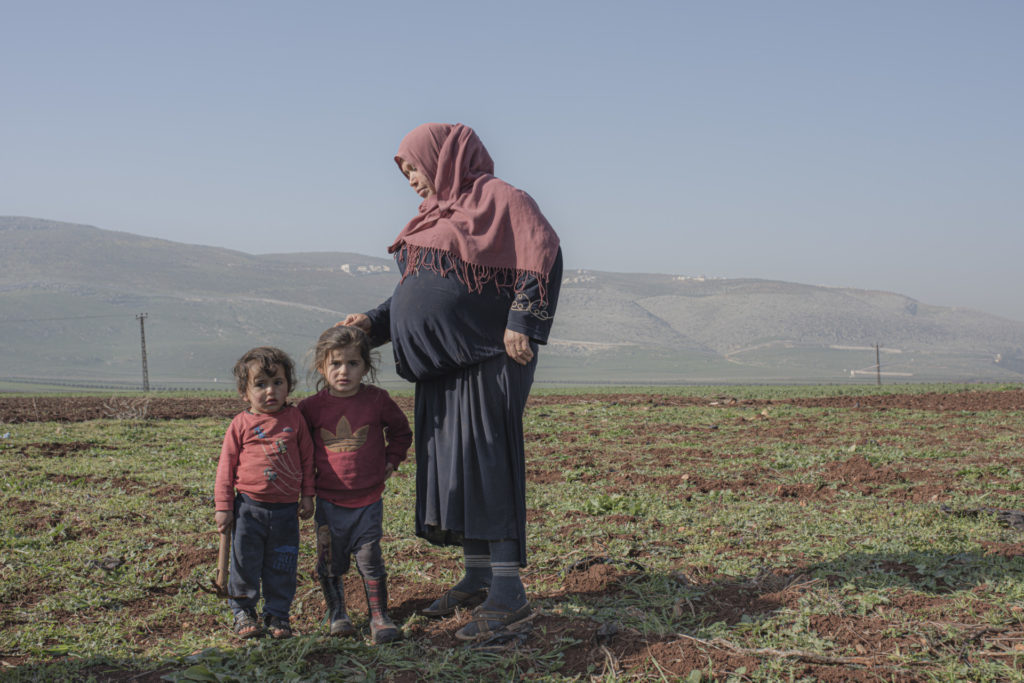
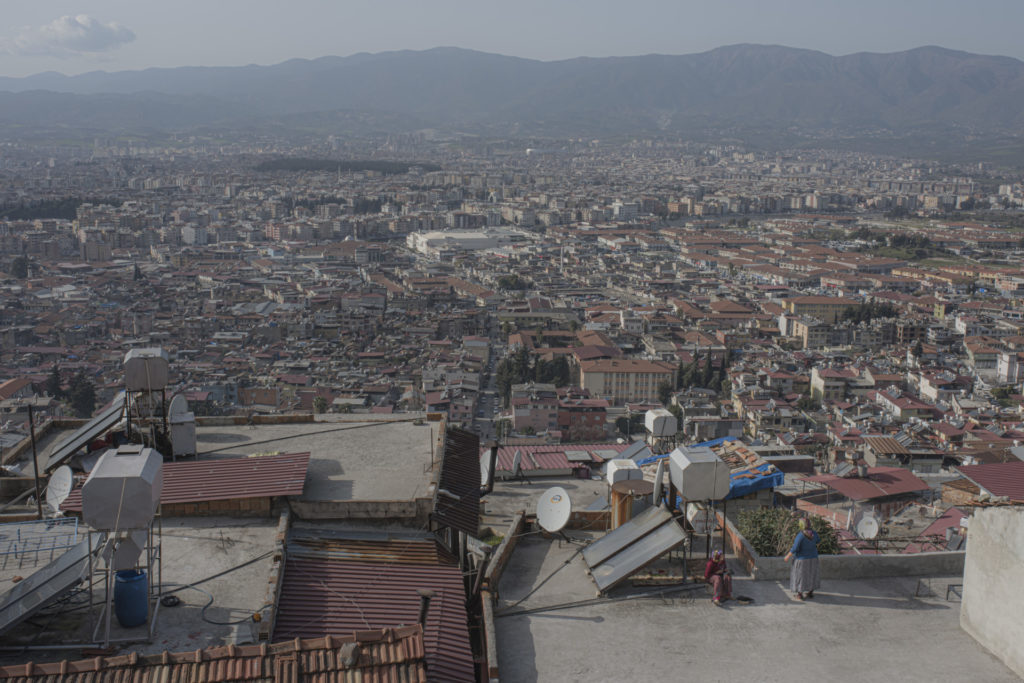
With the emergence of the Islamic State group and the massive bombing campaigns mounted by Russian and Syrian forces, the Syrian civil war reached a peak in violence between 2014 and 2015. That’s when the exodus from the country intensified. In total, 6.6 million left Syria; 1 million reached Europe, and several other hundreds of thousands fled to Lebanon, Jordan, and Iraq.
The vast majority, however, went to Turkey, where today around 3.6 million Syrians live, mostly spread out in the southeastern Turkish provinces, north of the border in Sanliurfa, Kahramanmaras, Gaziantep, Kilis, and Hatay.
In Reyhanli — in the province of Hatay — the days of early spring, the sun is already beginning to heat up the air, and motorcyclists ride as they please, without helmets or brakes, with their wife seated behind, both legs hanging from the same side, and a child or two in her arms. Saving space is important.
Before 2011, the city had about 90,000 inhabitants. Ten years later, the figure is almost 250,000. The new residents from the south are so numerous that a new neighborhood was built in Reyhanli. It’s called Yeni Sehir, which translates to the New City, and it is larger than the old one.
Reyhanli is more Syrian than Turkish. “I feel at home here, as if I had never left Syria. We are the majority, and also we Syrians have many more children than Turks, so Reyhanli is becoming more and more Syrian as the years pass,” says Fatima, a middle-aged Syrian woman.
And it really seems so. In Reyhanli, the posters in Turkish announcing new or old cell phones, accessories, insurance, kebab, shawarma, hotels, pensions, and secondhand cars share space with the ones in Arabic, which advertise the same or something similar. There is even a convergence in dress style, with some Turkish women from the city wearing the hijab the Syrian way and Syrians the Turkish way. Others, of course, do not wear it at all. In the fields surrounding the city and in the local kitchens, Syrian ingredients have come to stay; trucks with Turkish and Syrian license plates arrive filled with produce. Reyhanli is the gateway to the Idlib region, the only one in all of Syria under independent control of the opposition and Hayat Tahrir al-Sham, a jihadist group that claims to have broken with al Qaeda some years ago.
“And also, more and more, we have mixed marriages, and there are hundreds of mixed families,” says Zeyneb, a friend of Fatima, also a refugee. “Many local Turkish men want to marry Syrian girls because Syrian women take better care of the house. Turkish women are more independent. It happens much less frequently the other way around — Syrian men marrying Turkish women.”
A group of men wait in the old city center, just in front of the clock that exploded in 2013 in an attack that killed 52 people. Every time a car approaches, everyone looks in earnest, hoping it might stop with an offer of work. Most of the time the men are left waiting. “Every day I come here at eight in the morning, and I am here until six in the afternoon if someone doesn’t take me to work,” Hasan says.
Hasan arrived in Reyhanli five years ago from Aleppo. Like the others waiting in this spot of the city, he picks up odd jobs, which mostly involve moving furniture and helping on construction sites. For this, Hasan gets around 50 Turkish liras ($6) each day he works. If he does work, of course. Another man in the group, Ashraf, describes the precarity of their situation: “There are times when they give us less. It isn’t enough. And now with the COVID-19 pandemic, everything is much more difficult. We get a lot less work. In February, I spent 15 days in which I didn’t get anything.” Ashraf, who is from Damascus, explains that around here there are engineers and teachers — skilled professionals with experience.
Ashraf was a military man, first working for the regular army but later for the opposition. “I spent four years fighting with the Free Syrian Army, but I was shot in the knee in Ghouta in 2016. That’s when I decided to quit and flee to Turkey. Now, when I lift weight in the jobs we get, it really hurts, but it could be worse,” says Ashraf.
While he’s speaking, a car stops in front of the men. It seems like it could be a job opportunity, and there is a pause as the men wait in anticipation. Instead, a police officer gets out of the vehicle and, with an angry face, begins to yell at everyone: “Come on, get out of here! I’ve told you to leave, damn it! You have other places to be.”
Later, the police officer, who is dressed in plain clothes, turns to his companion: “From now on, don’t let them be here anymore. Every time you come and see them, kick them out. They have other places to sit and wait. Not here.”
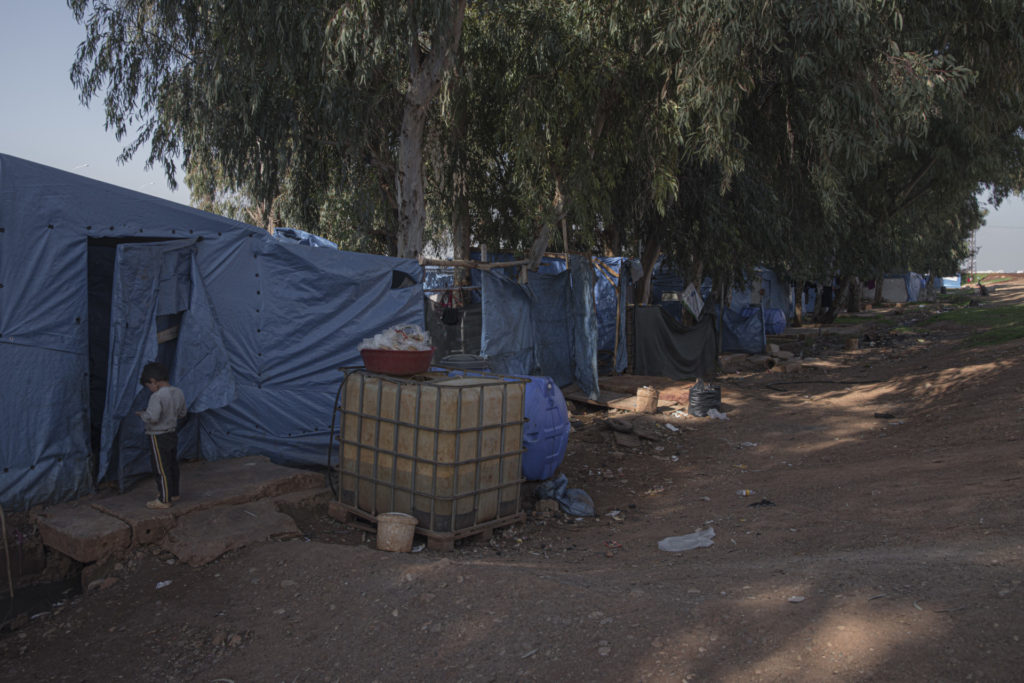
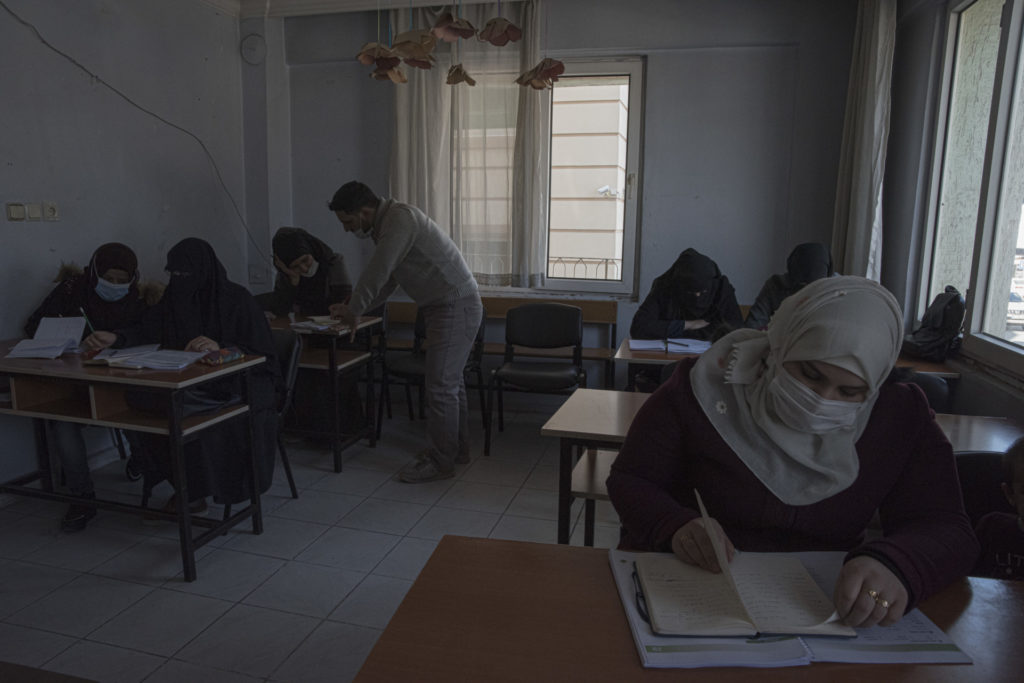
Not everything in southern Turkey suggests a harmonious coexistence between Syrians and Turks. “At first, Turkey opened its borders to Syrians fleeing the war. This occurred during the first three or four years of the conflict. The idea in Ankara was that the war would end soon and that the people who arrived would leave in a few years. Turkey welcomed everyone, but only for the short term,” explains Omar Kadkoy, a migration specialist at the Turkish think tank, Tepav.
The years passed — the war never ended. The Syrians, who were given “temporary protection status” by the Turkish government, decided to stay and fend for themselves in Turkey. “The extent to which Syrians are perceived as a threat to economic prerogatives of natives and established sociocultural values and norm systems is a significant driving force that shapes public attitudes toward Syrians. In other words, as the level of perceived threat increases, negativity and prejudice toward Syrians escalates,” says Duygu Merve Uysal, a migration researcher at Koç University in Istanbul. Right now, the vast majority of Turks want the Syrians out — at their earliest convenience.
Yet, the facts underscore the complexity of the situation: 3.6 million Syrian refugees live in Turkey, many of whom have nothing left in their country and cannot return. Half a million Syrians have been born in Turkey, and tens of thousands have opened their own businesses in Anatolia. There are about 680,000 Syrians in Turkish schools — in a few years, some of the best Turkish universities will start to become filled by Syrians who will speak better Turkish than Arabic.
Syrians have come to stay. “I would say that at least 50% of the 3.6 million have the potential to stay in Turkey, even if tomorrow the war stopped and everything returned to normal. Turkish society will end up accepting it because there will be no other way around it. These Syrians are here, they go to school, to the doctor, to the bakery. … Pretending they are not here will not change the reality nor solve the problem,” Kadkoy says.
Ali, for example, lives in Antakya, a city near Reyhanli, and although he was born in Aleppo, he does not remember anything about the city he left some eight years ago when he was just 2 years old. Now he’s 10 and says that he loves life in Turkey, that his parents would like to go back but that he himself, for the moment, is fine because he has many friends here. “About 10,” he says.
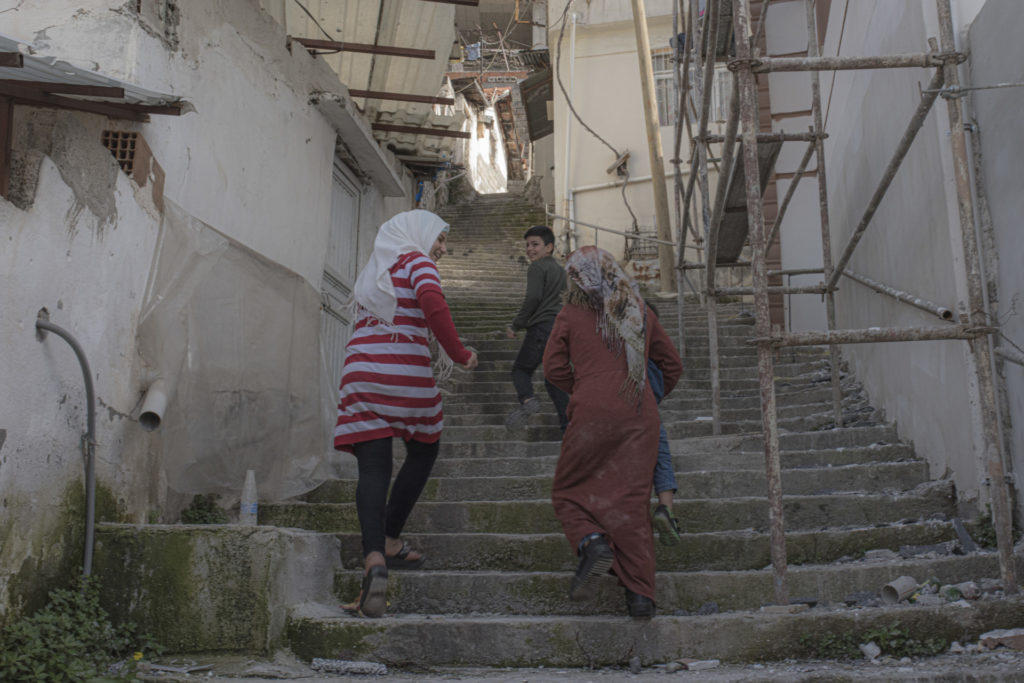
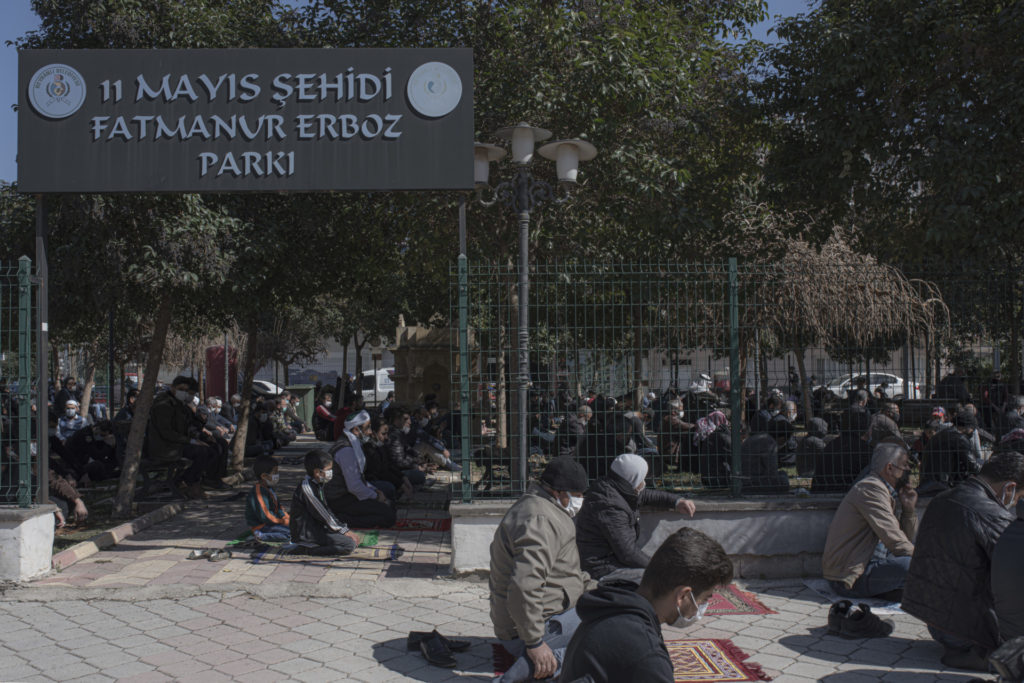
“I have 12,” says his older sister, Sara, who promptly explains that Ali does not remember the trip but that she does because she was older, and that they arrived in a small plastic boat across the border, which a few days before, their uncle had already crossed.
Now the whole family lives together. “When I grow up, I want to go to college. In Istanbul or wherever, and I would like to study to be a Turkish and Arabic teacher,” says 13-year-old Sara.
“Since Syrians have started to work, it is very difficult to find a job. We have lost everything. And the rental prices in the city have increased tenfold in recent years,” says a fruit vendor from Reyhanli who hopes that Syrians leave one day and that everything goes back to normal: the way it was before.
“It is an argument that has a part of reality,” Kadkoy answers, “because the demand for housing has risen enormously, and that increases prices. It’s undeniable. But there is also the opposite part of this matter. The property owners who rent the apartments benefit from the increase in demand. On labor issues, Syrians cannot be blamed for taking anyone else’s jobs because the work they do requires the least skill. Before their arrival, it was the Kurds who had them. Is it the Syrians’ fault that they are forced to take low-paying jobs in order to eat? The only way to change these perceptions is through more thorough integration policies.”
And while Eyad, Gazali, and the others must continue working in the fields, growing garlic, tomatoes, and whatever they are asked to farm that season, they always see, there in the distance, the wall that marks the border with Syria.
Now, in the spring and summer months, their morale is higher. “In winter, since nothing is grown, we don’t work, and we have a hard time,” explains Harran, a young woman who works in the same field as Gazali and Eyad. “At the very least,” she continues, “a store next door gives us some food, which we then pay for when the good weather arrives, in spring and summ—” “Ratatatatatatatata, tata, ratatatatata. Boom! Boom!” A few bursts interrupt the conversation.
Eyad explains that everything is fine. They hear this fighting sound almost every day and there is nothing to fear; it’s there in the distance, and the mountains carry the echo of the fighting here, making it seem very close. Besides, he says, these sounds are more like anti-aircraft batteries firing at planes than anything more serious.
“But, well,” Eyad adds, “of course we’re scared. We think that we are on this side of the border, that they will not come here. That Turkey is safe. But sometimes at night I think that someday there might be a mistake … that something falls on us.”
All photos taken by Alba Cambeiro



